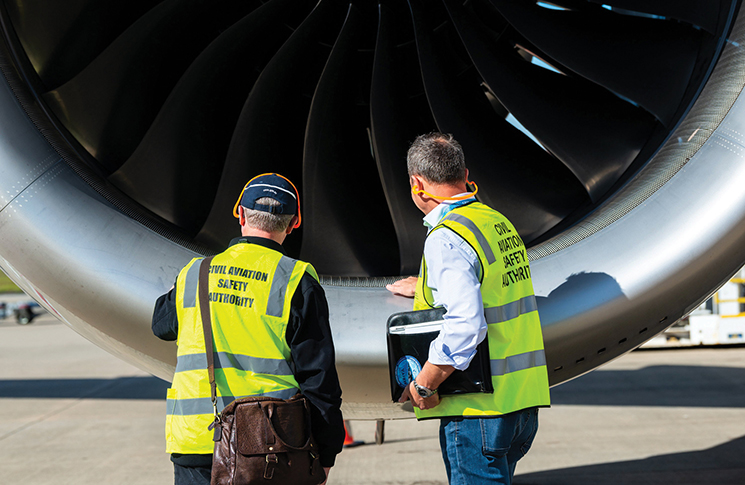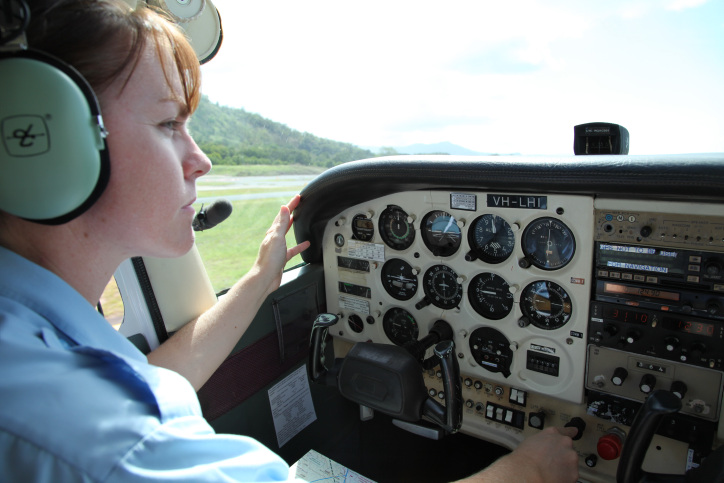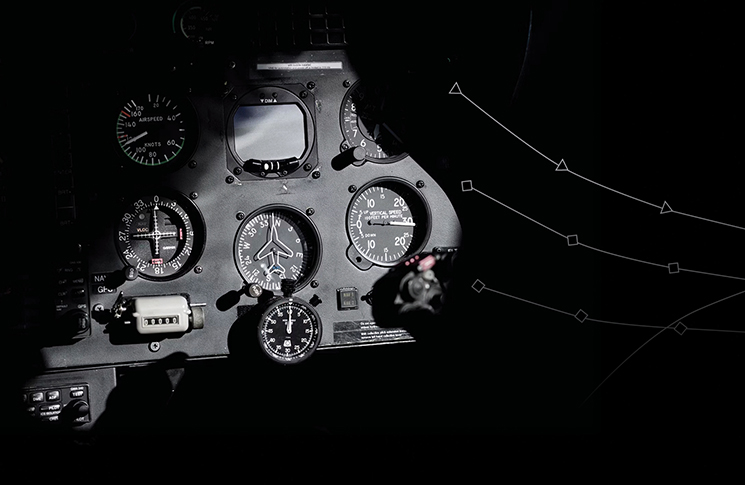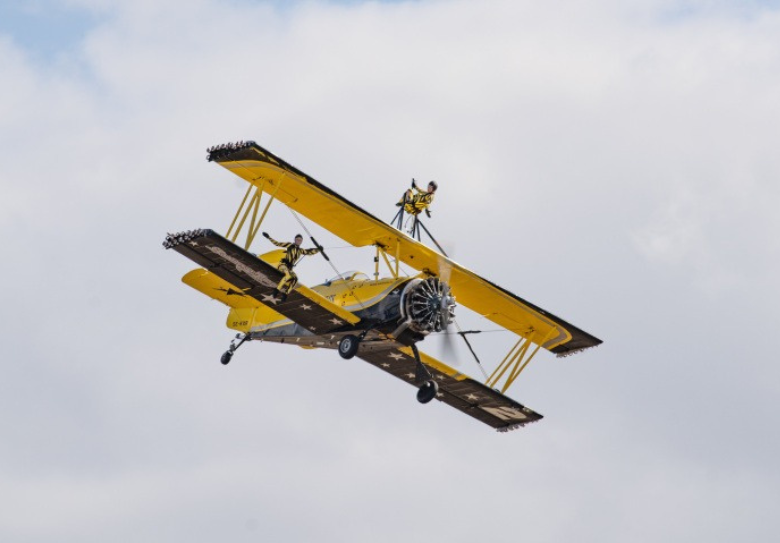- What is the approximate fuel flow of a large airliner such as an Airbus A350 cruising at 35,000 feet at mach 0.85?
a. 2.4 tonnes per hour
b. 6.8 tonnes per hour
c. 8.3 tonnes per hour
d. 1.2 tonnes per hour
2. What is the purpose of the 2 steerable wheels on a Boeing 777 at the aft end of the main landing gear bogey?
a. to help stabilise the landing gear on the landing roll-out
b. to provide shimmy dampening
c. to help turn the aircraft without scrubbing
the tyres
d. to distribute the weight of the aircraft more evenly
3. What are the effects of using a high percentage of carbon fibre in the construction of modern airliners?
a. higher strength-to-weight ratios
b. the ability to have higher cruising altitudes with higher cabin max differentials
c. engines with less thrust due to power-to-weight ratios
d. more complicated construction methods
4. What are some outcomes of Airbus airliners using sidestick controls, compared to the more traditional yoke control used in Boeing aircraft?
a. allows for the installation of fold-down trays for ancillary equipment such as personal computers
b. offers the flight crew a clearer view of the instruments
c. gives the pilots more room to operate
d. all of the above
5. Why is the airframe of newer airliners often constructed with composite materials such as carbon fibre?
a. the airframe can take more stress than an aluminium airframe so it can be pressurised to a lower cabin altitude
b. the airframe can’t take as much stress as an aluminium airframe because it is less flexible
c. the airframe often has passenger windows that are larger than earlier designs, which prevents them from obtaining lower cabin altitudes
d. the airframe is lighter
6. Do remotely piloted aircraft systems (RPAS) need to have a certificate of airworthiness?
a. no
b. yes
c. only medium and large RPA (over 25 kg) need to have a certificate of airworthiness
d. only large RPA (over 150 kg) need to have a certificate of airworthiness
7. What are the maintenance requirements for large RPAS (over 150 kg gross weight)?
a. by the maintenance controller
b. in accordance with the manufacturer’s maintenance schedule
c. by a person (or someone supervised by them) who holds an airworthiness authority issued by CASA
d. in accordance with Class B maintenance schedule requirements per Part 4A of the Civil Aviation Safety Regulations (CASR)
e. a and b above
f. c and d above
8. How is ‘supervising maintenance’ defined in Part 3 of the CASR dictionary?
a. supervision involves being physically present to watch the person throughout the whole task to intervene if required
b. if the person being supervised is experienced and competent, you do not need to supervise them
c. providing you are able to give advice to the person, this is all that is required for ‘supervising’
d. supervision can be nuanced and a more detailed explanation of the meaning of supervision can be found in the Acceptable Means of Compliance and Guidance Material (AMC/GM) Continuing airworthiness – aircraft engineer licences and ratings – CASR Part 66
9. Under CASR Part 42, who is primarily responsible for ensuring the continuing airworthiness of a registered aircraft?
a. the licensed aircraft maintenance engineer
b. the continuing airworthiness management organisation
c. the aircraft owner
d. the approved maintenance organisation
10. What will cause a normally aspirated piston engine aircraft with a constant speed propeller to have a reduction in power?
a. mixture is leaned
b. throttle is opened
c. propeller rpm is reduced
d. aircraft is in a dive
11. Why does a turbo-charged aircraft engine produce more power?
a. the engine operates at a greater power without increasing rpm or cubic capacity
b. it heats the air in the cylinder to a higher temperature
c. the pressure in the engine is less than ambient at altitude
d. it uses higher octane fuel
12. What is the primary purpose of the dual magneto systems used in Lycoming and Continental engines?
a. increase the voltage supplied to the spark plugs
b. reduce fuel consumption during cruise
c. provide redundancy and improve combustion efficiency
d. ensure compliances with CASR safety regulations
13. What type of oil system is typically used in both Lycoming and Continental piston engines?
a. wet sump system
b. dry sump system
c. splash lubrication system
d. pressurised cooling system
14. What does the ‘O’ stand for in the Lycoming engine model TIO-540?
a. oriented
b. opposed
c. opposite
d. optimum





